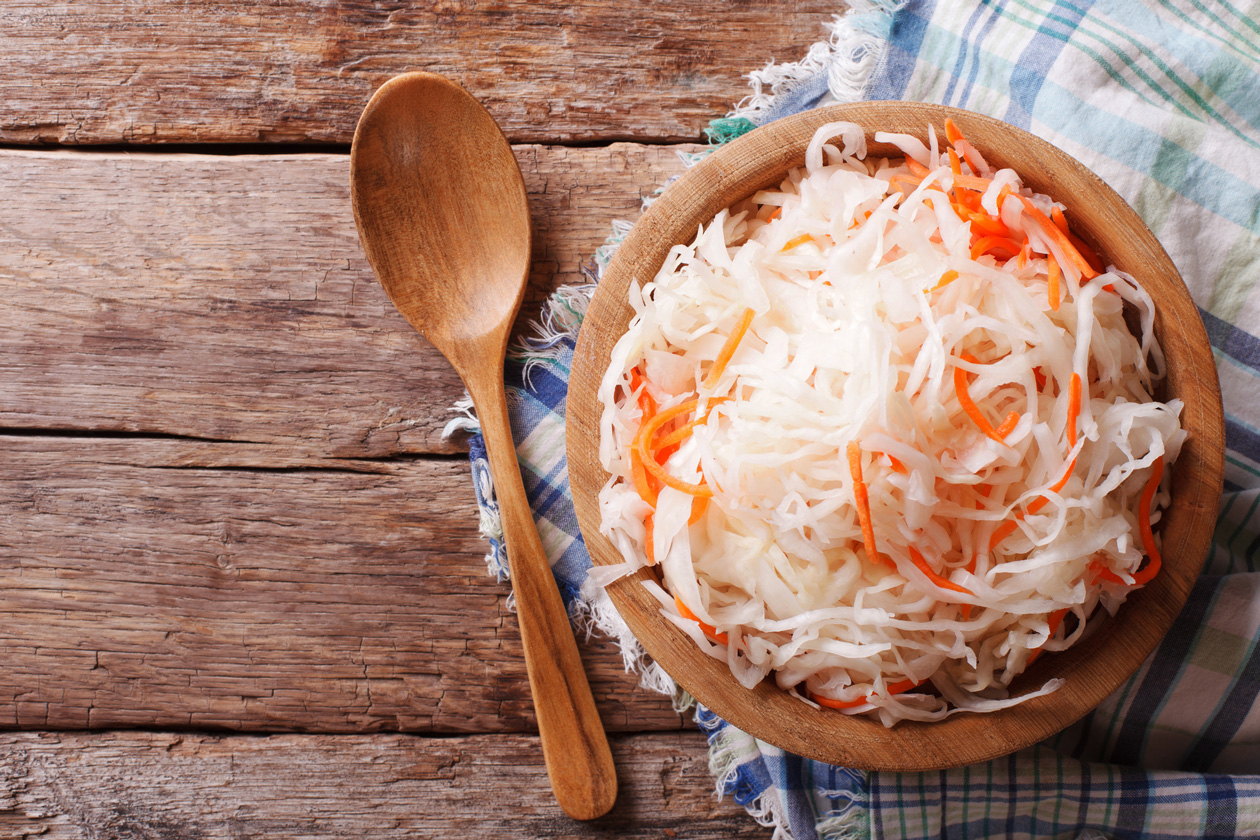If you’re from Pennsylvania, there’s a good chance you’ve had sauerkraut before. You’ve almost certainly smelled it! For those of you unfamiliar with sauerkraut, it’s fermented cabbage. Equal parts salt and sour, the dish is a tradition for Germans, and descendants of Germans, at New Years.
Sauerkraut is actually much older than you may think, though. It’s believed that builders of the Great Wall of China fermented shredded cabbage more than 2,000 years ago before it was brought to Europe by Genghis Khan. Shortly after, the Germanic peoples would make the dish their own before bringing it to the New World.
While the intense scent or flavor may put some people off, studies show that sauerkraut has a bevy of health benefits. Whether you’re pairing it with some pork chops or a delicious Reuben, this “sour cabbage” could be a cornerstone of your diet.
Practically Magic Probiotics
Probiotics are one of the chief strengths of sauerkraut. These helpful bacteria are created during the fermentation process and are behind many of the benefits of sauerkraut. Beneficial probiotics can be found in other fermented foods and treats like yogurt. In terms of how helpful bacteria can be good for you, probiotics are very good for your digestive system — restoring the balance between good bacteria and bad bacteria which improves gut health. Probiotics can even lower your amounts of bad cholesterol and blood pressure, lowering your chances of heart disease. They may even help you with weight and fat loss!
Great for Gut Health
Probiotics are good for your gut health, but that’s only a portion of what they do for you. They’re effective at combating several bowel diseases, like irritable bowel syndrome and diarrhea, and have been claimed to help with many other aspects of our health.
Sauerkraut Probiotics Improve General Health
One study discovered the extent at which probiotics touch nearly every facet of health. Beyond digestion, probiotics can improve your immune system, lower your risk of certain brain disorders, and even combat some cancers. If you’re concerned about inflammation, probiotics can be your answer. There is also evidence of the anti-inflammatory effects of probiotic-rich foods like sauerkraut.
Sauerkraut Is a Simple Way to Get Your Probiotic Fill
While there are over-the-counter ways to get probiotics, sauerkraut packs the most punch. Two ounces of sauerkraut contains more probiotics than a 100-count bottle of probiotic capsules. Even the sauerkraut juice is rich in probiotics to set your digestion right. Probiotics aren’t the only health perk of sauerkraut, though.
Wait, There Are More Health Benefits of Sauerkraut?
It’s a Possible Cancer-Fighter
That’s right, the health hits don’t stop with probiotics. Sauerkraut offers a double-whammy of cancer-fighting compounds. Not only do you get the probiotics, but you get isothiocyanate compounds from the cabbage.
Loaded with Minerals
Sauerkraut is also rich in several key minerals, such as potassium and iron. Potassium lowers your blood pressure and helps with digestion, heart rhythm, and nerve impulses. Iron is also good for your blood, combatting anemia and leading to healthier skin, hair, and nails.
Vitamins That Can Make You as Strong as Sauerkraut Smells
Beyond these minerals, sauerkraut’s health benefits extend to several nutrients that build strong bones and prevent osteoporosis. It may even help you with weight loss! Sauerkraut is low in calories but high in fiber. This can lead to you feeling fuller faster, cutting your caloric intake. Finally, sauerkraut is high in vitamins A, C, D, and K. There aren’t many ways that sauerkraut doesn’t benefit your health.
Make Sauerkraut for Yourself

Homemade Sauerkraut Recipe
Ingredients
- 1 head of cabbage, chopped thinly
- 1 ½ tbsp of salt
Directions
- Wash the head of cabbage and lightly dry with a paper towel.
- Chop the head of cabbage into quarters.
- Remove the central core of the cabbage.
- Cut the remaining cabbage into thin strips, removing any limp or wilted strips.
- Place the cabbage into a large mixing bowl. Salt the cabbage and begin mixing thoroughly, massaging the salt into the cabbage until it becomes watery and limp.
- Pack the salted cabbage into a large mason jar. Pour any liquid in the mixing bowl into the mason jar.
- Weigh down the cabbage in the mason jar with a small weighted jar. This can be a smaller jelly jar or a plastic bag filled with water. The important thing this that the cabbage stays submerged below the fermenting liquid and away from the air.
- Cover the jar with a square of cloth and a rubber band or lid.
- Every few hours, press down on the cabbage to push out additional liquid.
- Set aside in a cool area.
- After 24 hours, check the cabbage. If the cabbage is not fully submerged by liquid, dissolve salt in water (roughly 1 tsp of salt to 1 cup of water) until the cabbage is submerged.
- Cover and set aside again.
- Check the cabbage each day, tasting each day until it reaches a flavor you’re happy with. Generally, the cabbage will be ready after three days, but the longer you let it set, the more the flavors will develop. Each day, skim off any mold that may develop. Don’t eat any part that grew mold. White bubbles or foaming are OK, though.
- Refrigerate after it tastes to your liking.
● ● ●
There you have it. All the health benefits of saeurkraut are now at your full disposal in a simple set and check recipe! Now you can add your own homemade kraut to pork or Reuben sandwhiches to give it a real healthy kick of flavor.



